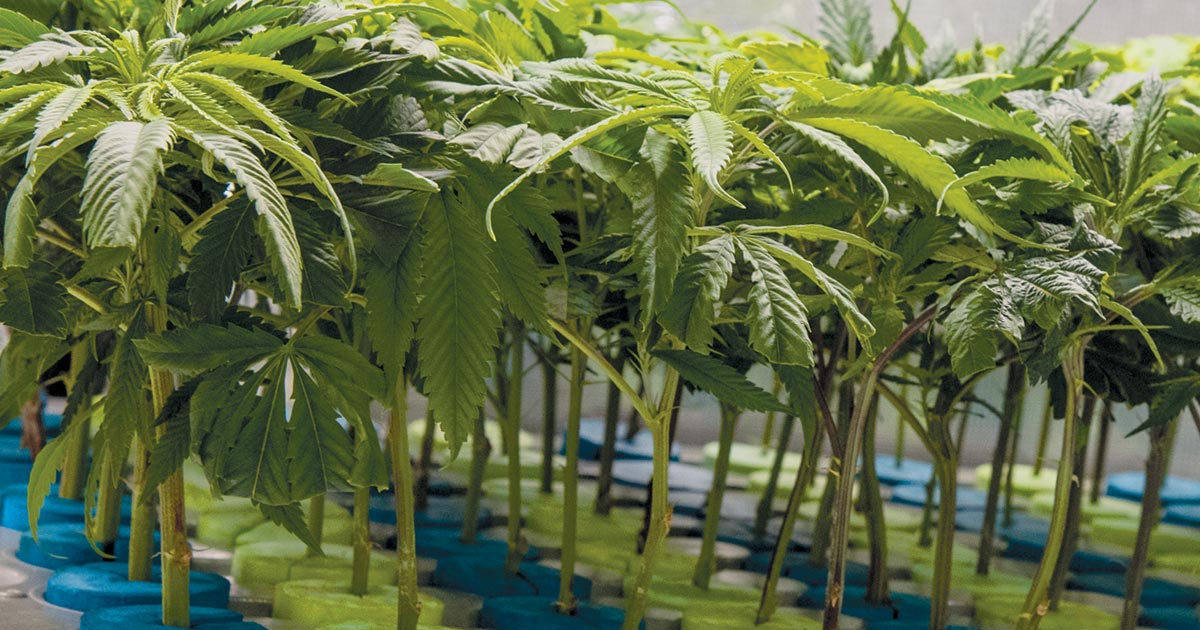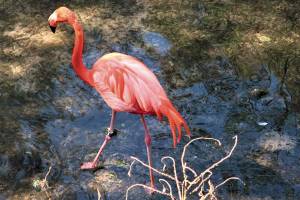Now that you’re ready to grow your own marijuana, and you’re about to buy your first packet of seeds, you first need to ask yourself whether you’re a baker or a cook.
If you’re more like a baker, you might want to plant the little pips using hydroponics, since you like to be precise and follow an exact recipe.
“In hydroponics, you’re feeding chemicals directly to the plant, exactly what it needs in the moment, and you also need to be able to understand what it needs,” said Randy Dery, who runs the Missoula location of Lifted Meds. “It’s a much more scientific approach.”
Dery suggests using soil if you’re more like a cook, who just throws things together to get the desired end results.
“Soil is much more forgiving,” Dery said. “It is its own little ecosystem, and with soil you’re feeding the microorganisms in the soil as opposed to the plant. I would suggest most people start out with soil and organic nutrients, allowing the bacteria and fungi to do all the work for you. They stabilize the pH of the soil.”
Cannabis likes a semi acidic environment of around 6 to 6.5 pH. Test your tap water for chlorine or chloramine, since they will kill the microorganisms in the soil. According to Dery, if you have either, get a reverse osmosis system for your house, which allows neutral water to be added to the soil, so nothing can build up.
Planting Seeds
Plants from seeds tend to be hybrids, with some leaning more toward sativa and others leaning more toward indica. Sativa plants are tall and thin with finger-shaped leaves and have a higher CBD content and lower THC levels. They offer an energizing effect, helping to reduce stress and increase focus and creativity. Indica plants, on the other hand, are shorter and bushier, while best suited for end-of-day relaxation. Other seeds produce plants with a high cannabidiol (CBD, which is non-psychoactive) content, used for more medical benefits.
Seeds come in packets, and about 70 percent of those seeds actually grow into the female flowering plants that produce the desired bud crops.
Strains
Dozens of strains are available for both recreational and wellness uses, but they can be pricey. One company, homegrowncannabisco.com, charges anywhere from $100 for eight recreational plant seeds to about $112 for eight of the wellness varieties. Lifted sells 10-packs for about 60 different strains, running anywhere between $80 and $110.
Growing Outdoors
Montana law dictates plants grown outdoors must be hidden from view. Plants need a minimum of six hours of direct sun to successfully reach acceptable yields.
Sustained temperatures above 85 or below 55, and high wind, will hinder successful yields, as will heavy rain. Silty soils, which contain nutrients and retain water well, are ideal, according to leafly.com.
Many outdoor growers use containers in order to better control growth, making it easier to conceal plants. Potted plants are also more easily transported.
Germinating
Germinating seeds is required, whether using hydroponics or soil. Robert Bergman, who sponsors the website, I (heart) Growing Marijuana, said seeds should be germinated either in a starter cube—usually fiberglass growing pucks—or in a glass of water with the proper pH. Others suggest germinating the seeds between two moistened paper towels—making sure they’re not drenched—with distilled or bottled water. Dery said he uses the latter process, placing the seeds on top of his refrigerator to maintain constant temperatures while he keeps them consistently moist. A germinated seed shows a tap root, which appears like a little tail.
Watering
According to Dery, one of the most common mistakes people make with planting seeds in soil is overwatering.
“You definitely want to learn how to read your plants. As soon as they start to limp out a little bit you’ll see the leaves lay down a little bit. You’ll actually see the plant get thirsty,” he said. He noted keeping the soil saturated can drown the soil organisms and cause root rot. “Learning to let it appropriately dry out is part of the art form.”
Lighting
Dery strongly encourages using LED lights indoors, with which one should wear protective eyewear. During the growing phase of the plants, they’ll need 18 to 24 hours of light a day. Once they start to flower, they need 12 hours perfect darkness and 12 hours of light.
“Once you flip that light cycle, and you give them 12 hours of darkness, they start the flower process,” he said. “Once that process starts, it is the beginning of the end of that plant’s life. It’s going to grow more and more vigorously and put more and more energy into building these flowers.”
That flower building, he said, is essentially the plant trying to be pollinated.
“It’s putting out these little pre-flowers, pistils, that have little white hairs that come out, and those are trying to catch pollen. If there’s no pollen for those to catch, then it produces five or six more. It keeps doing that, and that’s the actual mass of the flower,” Dery said.
According to Dery, interrupting the dark cycle at all—even with a brief flash of light—will stress a plant and very likely cause it to try to produce seeds, which is undesirable. He said because cannabis strongly wants to reproduce, any stress in its life causes it to act like it’s reached the end of its growth cycle.
“It does everything it can to pass on its genetics, so it will produce male flowers on a female plant just to produce seeds, so you cannot interrupt that dark cycle,” he said.
Outdoors, the changing seasons, with less sunlight available, will trigger the flowering stage.
Some varieties, known as autoflower, don’t require the care or worry about exacting lighting needs. Some of these start to flower around two to four weeks into the growing cycle, and some strains, such as one called Jack Herer, yield in as little as eight weeks.
Dery grew this variety from clones early in his marijuana career, and it won eighth place in the Montana State Cannabis Club. The plant is named for Jack Herer, a longtime cannabis activist and author of The Emperor Wears No Clothes.
Feeding
Dery said he feeds his plants bottled organic nutrients in order to maintain a natural ecosystem in the soil.
“Bottled nutrients will take a lot of the guesswork out of it. They all have feed charts directly on the bottles or that you can print that tell you how much to give at every stage of its life,” he said.
Brands he recommended include Foxfarm, Big Bloom, and Uncle John’s Blend.
Flowering
According to Dery, most marijuana plants won’t begin the flowering process until they reach maturity at about three months. Generally, it takes nine weeks for a plant to reach the flowering stage and about two months before the product is “perfect” for smoking.
Once the buds have darkened and are no longer growing new white hairs, it’s time to harvest. Maximum THC levels are realized when at least half or more of the hairs have gotten darker, Bergman said. Waiting until almost all of the hairs have darkened can lead to “a highly relaxing high,” he said.
Harvesting and Drying
When harvesting, he typically chops down an entire plant in one mass to hang for the drying process—called a whole-plant hang.
Dery said plants need to hang for 14 days at 60 degrees, with 60 percent humidity, and the drying area needs good ventilation.
“If you can achieve that, those buds will retain all those beautiful terpenes—all those incredible smells—and be vibrant.”
He added it’s important the product dries evenly, to prevent mold, and he emphasized the importance of not rushing the drying process.
Curing
After the initial drying stage, it’s time to cut the buds from the stem for curing and continued drying. Cutting the plants releases chlorophyll and other gases, said Dery, and rushing this stage results in a product that has bit of a hay like smell or vegetative grass smell
“That means the plant was over-dried, or temperatures got too high, and it didn’t do the natural process of breaking down the chlorophyl,” he said.
Once cut, the buds get stored in a dark place, sealed, air-tight containers—typically mason jars. The containers at this point need to be ‘burped’ every day—by opening and releasing air from the jar—to release moisture and residual gas.
According to Dery, a proper curing leads to more favorable results because it draws water from the center of the buds to the outside, equalizing the moisture and locking in the flavor, smell, characteristics, and potency of the plant. “It makes for a cleaner, less harsh smoke and a much healthier product.”
Growing for Retail
Growing marijuana for retail is the purview of larger operations in Montana. Eric Harding, operations manager for Lifted Meds, is also the compliance officer for High Humidity Farms, which grows various strains of marijuana for Lifted. At its grow room near Bigfork—one of three such facilities HHF operates—marijuana is grown in very controlled environments. Growing areas include fully adjustable LED lighting, dehumidifiers, and fresh air exchanges.
According to the shop’s grow manager Russell Shea, the fresh air passes through UV lighting, to kill any bacteria.
Young plants are placed in a small grow compartment, with watering and timing strictly controlled automatically. They’re sprayed for one minute out of every four. After three weeks they’re transferred into 6-inch pots. Large plants are hand-watered, which allows for close inspection of each plant, to check for insects or mold.
About 900 plants are in various stages of growth at this facility. This includes its top-selling LA Kush Cake, a hybrid strain with one of the highest THC contents of any strain anywhere, according to Shea.
Lifted’s OG Lime Killer, a hybrid with strong CBD properties, garnered a Best CBD Cup at the Montana Hemp Fest. Lifted also won the Mother Cup, where clones of a particular strain are given to several providers to grow. After a year of grow time, results are judged by taste, smell, flavor and other factors.
Overall, the firm has garnered more than 20 awards for the quality of the products they offer.
“That’s what got us where we are now,” Harding said. MSN











